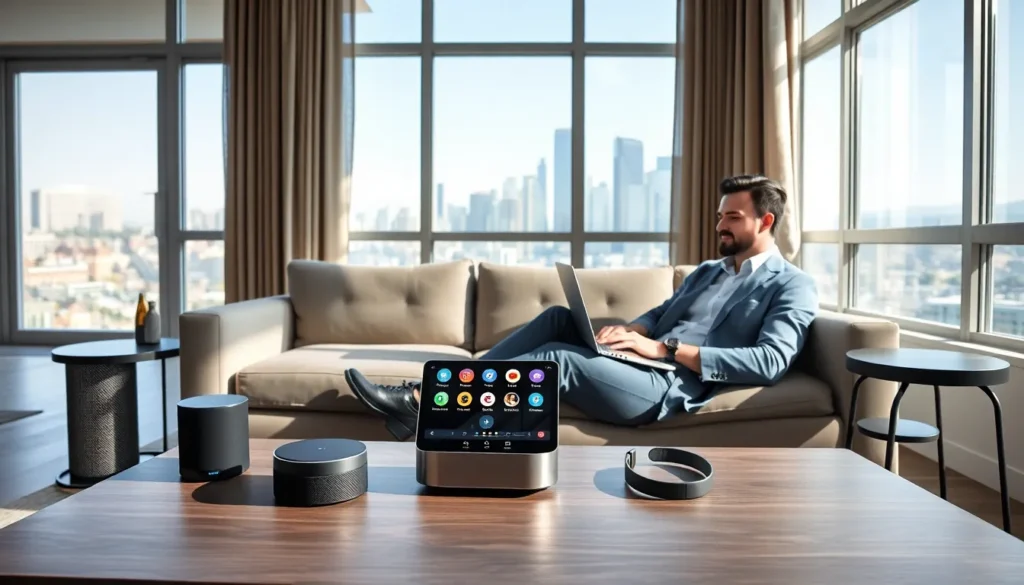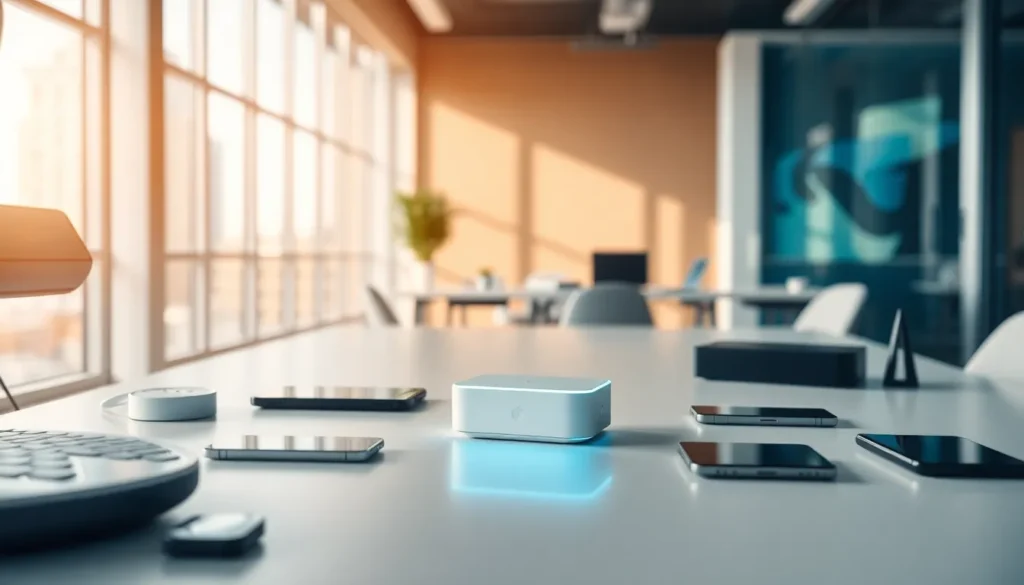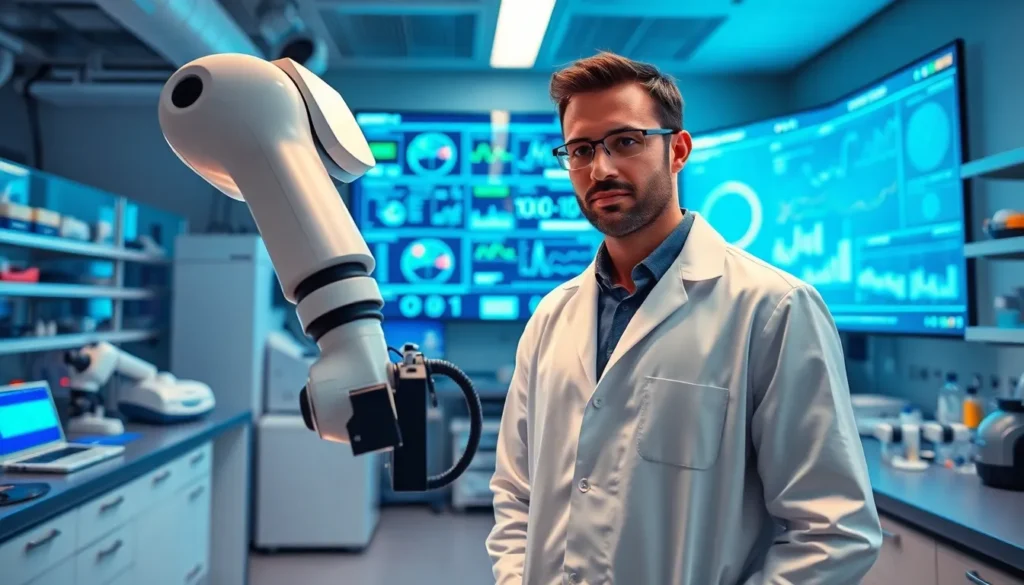Table of Contents
ToggleIn today’s fast-paced world, technology is more than just a gadget or a tool, it’s woven into the very fabric of our daily lives. From the moment that alarm goes off (thanks, smartphone.) to late-night scrolling on social media, technology shapes our routines in ways we often take for granted. But have you ever paused to think about how profoundly it influences communication, productivity, and even personal connections? Buckle up, because we’re diving into the fascinating realm of technology in daily life and exploring why it feels like it’s always one step ahead of us, whether we like it or not.
The Role of Technology in Communication

Instant Messaging and Social Media
Technology has revolutionized communication, and nowhere is this more evident than in the explosive growth of instant messaging and social media platforms. Apps like WhatsApp, Facebook Messenger, and Twitter allow individuals to connect with others instantly, regardless of geographical boundaries. No longer is there a need to wait for a letter to arrive or for a phone call to connect. Instead, a quick tap on a screen can send a message across the globe in seconds. This immediate connectivity has led to a fundamental shift in how relationships are formed and maintained, making virtual friendships commonplace.
Video Conferencing and Remote Work
Video conferencing tools like Zoom and Microsoft Teams have not only changed the workforce but also altered the concept of a work-life balance. Employees can collaborate with their teams from the comfort of their homes, eliminating long commutes and reshaping business interactions. Imagine attending a board meeting in your pajamas. This blend of convenience and comfort has its perks, but it also raises questions about how remote work affects team dynamics and interpersonal relationships.
Impacts on Personal Relationships
While technology opens up channels for communication, it can also lead to misunderstandings and complications in personal relationships. Texting can sometimes lack the emotional nuance of face-to-face conversations. Emojis can’t always capture feelings, and the subtleties of tone might get lost in translation. Plus, with everyone glued to their devices, are we truly present with one another? The paradox of technology is that while it connects us, it might also create barriers.
Enhancing Daily Activities with Technology
Smart Home Devices
Step into a world where your toaster could be smarter than you. Smart home devices like Amazon Echo and Google Nest have transformed daily living. These gadgets can simplify routines, manage schedules, and even control home environments with a simple voice command. Want to set the mood lighting for a romantic dinner? No problem. Need to turn up the thermostat before you get home? Easy as pie. As technology continues to embed itself in household chores, it’s clear that our homes are getting that much smarter.
Wearable Technology
Wearable technology, such as smartwatches and fitness trackers, has gained popularity for all the right reasons. These devices monitor health metrics and keep users informed about their physical well-being. From tracking steps to monitoring heart rates, they help individuals lead healthier lifestyles. Plus, these gadgets often come with sleek designs that make them a fashionable accessory. They remind wearers to get up and move, blending technology seamlessly into the daily grind.
Health Monitoring and Fitness Tracking
Gone are the days when seeing a doctor was the only way to get health insights. Now, wearable devices and health apps enable people to monitor everything from sleep patterns to calorie intake right from their smartphones. This technological advancement not only promotes a culture of proactive health management but also gives users the power to make informed decisions about their lifestyles.
Technology in Education
Online Learning Platforms
The landscape of education has evolved remarkably, particularly with the emergence of online learning platforms. Websites like Coursera, Khan Academy, and even company-sponsored training sessions allow learners to develop skills at their own pace, which isn’t just a game-changer for students but also for working professionals seeking to enhance their careers. Gone are the days of traditional classrooms. Online platforms provide access to a wealth of knowledge and information that was previously out of reach for many.
Educational Apps and Tools
Educational apps like Duolingo and Quizlet have made learning more engaging and interactive. These tools incorporate gamification, making education feel less like a chore and more like a fun challenge. By utilizing technology for learning, students are discovering new ways to tackle subjects they once found tedious. This shift isn’t just beneficial for the current generation of learners: it redefines what education looks like for future generations.
The Future of Technology in Daily Life
Emerging Trends and Innovations
As technology continues to advance, emerging trends are set to redefine daily life further. Innovations like artificial intelligence, virtual reality, and the Internet of Things are poised to create even more transformative experiences. Imagine a future where your fridge could reorder groceries for you or virtual classrooms where education is as immersive as a video game. It’s not as far-fetched as it sounds.
Challenges and Considerations
Yet, with great power comes great responsibility, or so the saying goes. As technology becomes more integrated, challenges such as privacy concerns, cybersecurity threats, and the digital divide must be addressed. How do we ensure everyone has access to the benefits of technology while also protecting personal data? Striking this balance is crucial as we move forward.




